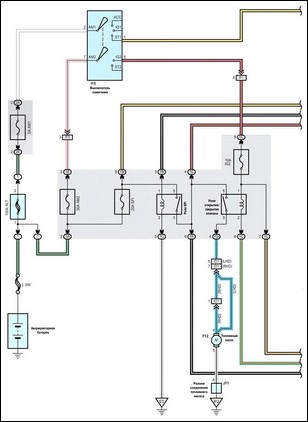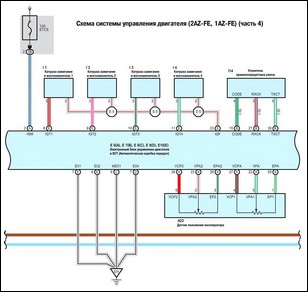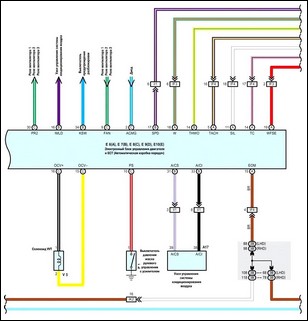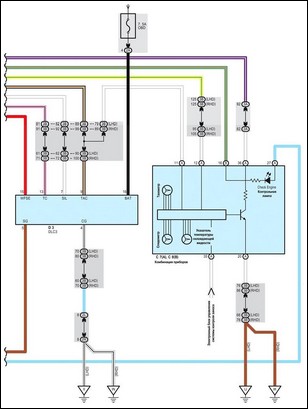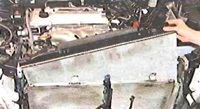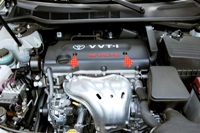The engines installed on Toyota Camry vehicles are equipped with an electronic engine management system with multiport fuel injection
This system ensures that the latest emissions and fumes regulations are met while maintaining high driving performance and low fuel consumption.
The control device in the system is the electronic control unit (ECU).
Based on the information received from the sensors, the ECU calculates the parameters for fuel injection control and ignition timing control.
The ECU also controls the operation of the electric motors of the engine cooling fan and the electromagnetic clutch for turning on the air conditioning compressor.
The electronic unit performs the function of self-diagnosis of the system elements and notifies the driver of any malfunctions
Part 1
Part 2
Part 3
Part 4
Part 5
Part 6
Before removing any components of the fuel injection control system, disconnect the wire from the "-" terminal of the battery.
Do not start the engine if the cable lugs on the battery are loose.
Never disconnect the battery from the vehicle's electrical system while the engine is running.
When charging the battery, disconnect it from the car's on-board network.
Do not expose the ECU to temperatures above 65º C in working condition and above 80º C in non-working condition (for example, in a drying chamber)
Do not disconnect or connect wires to the computer while the ignition is on.
Before carrying out electric welding work on the car, disconnect the wires from the battery and the wiring harness pads from the computer.
Perform all voltage measurements with a digital voltmeter with an internal resistance of at least 10 MΩ.
Electronic components used in the fuel injection system are designed for very low voltage, so they can be easily damaged by electrostatic discharge.
To prevent damage to the computer, do not touch its terminals with your hands.







